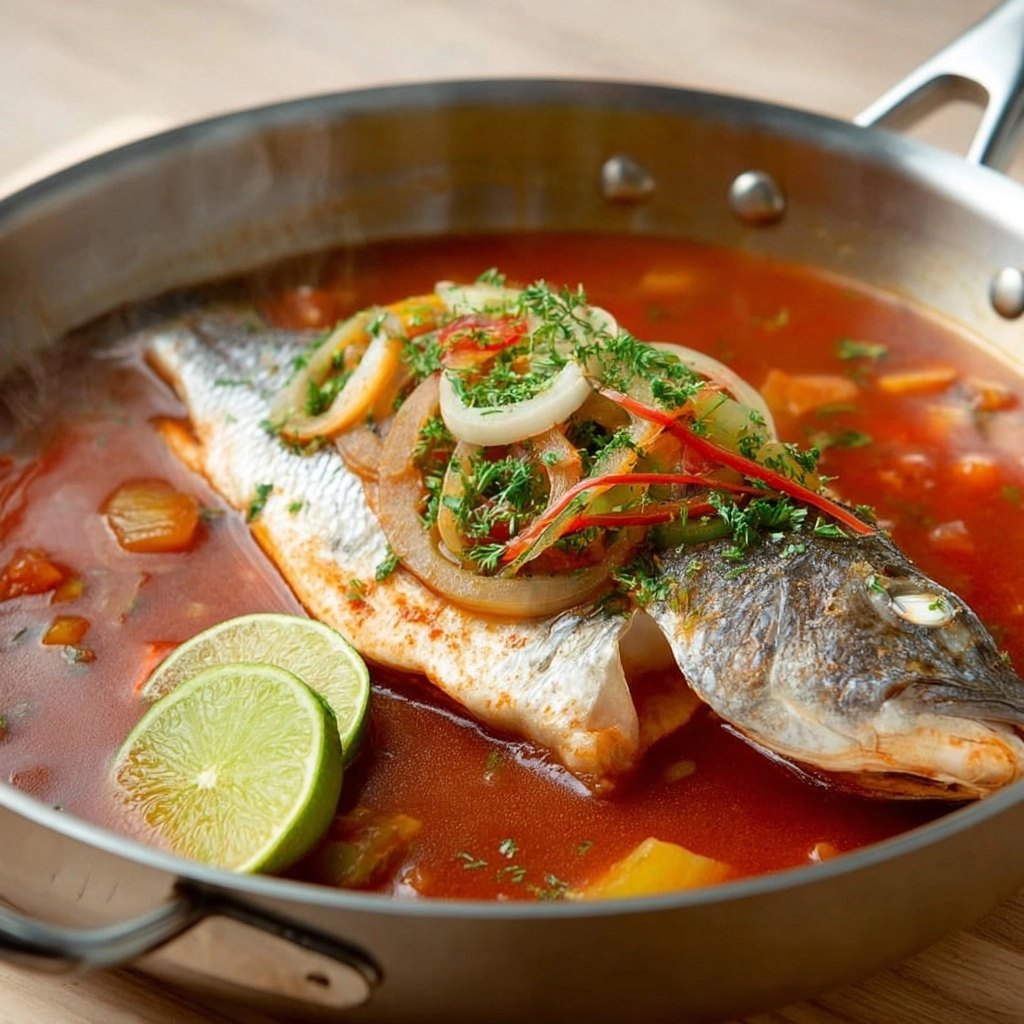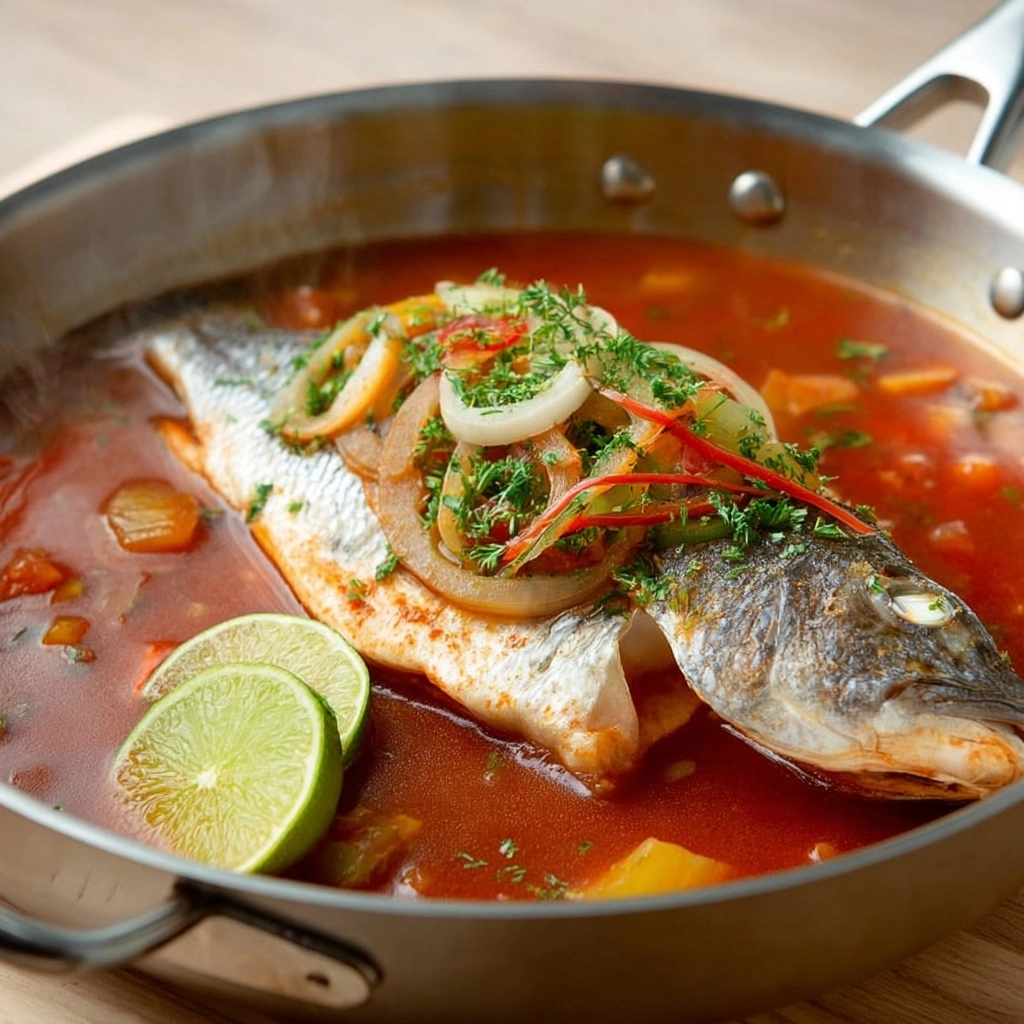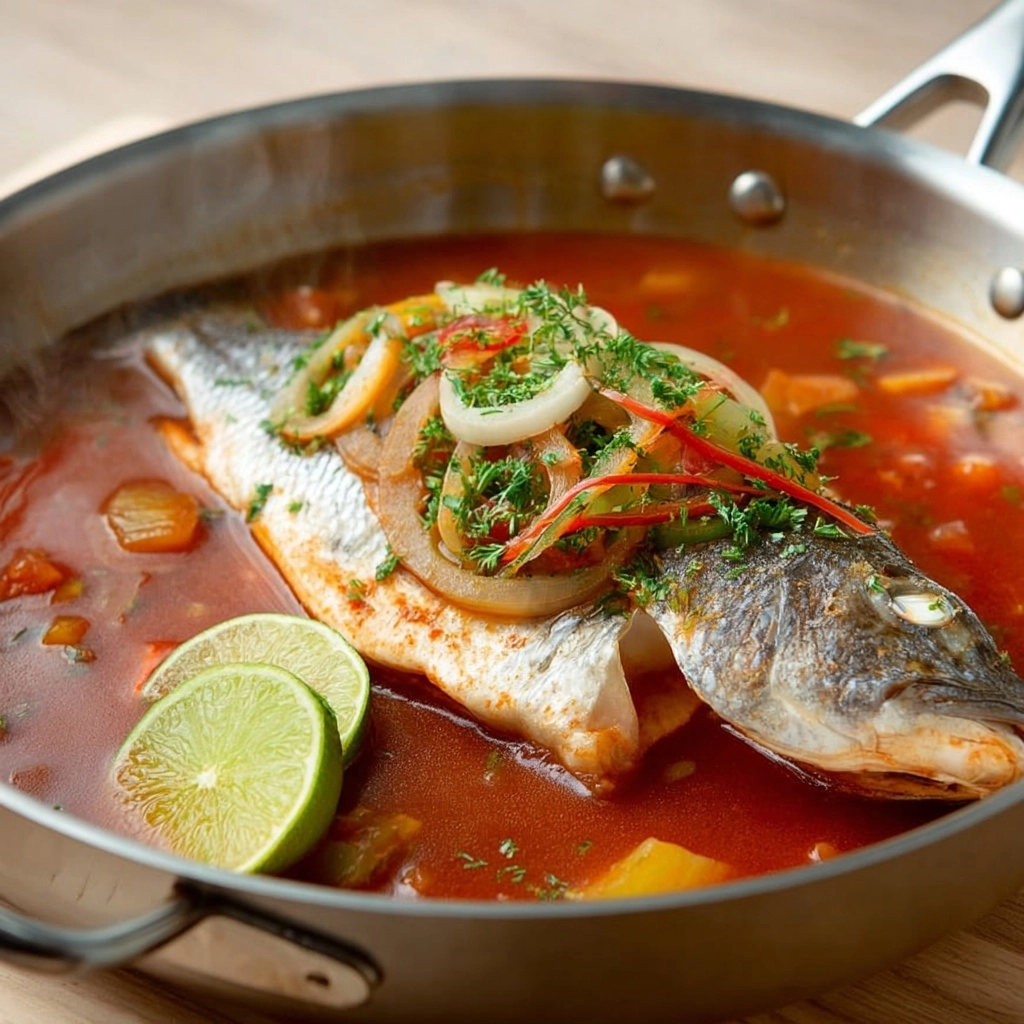If you’re searching for a light, delicate, and nourishing meal that’s as simple to prepare as it is rewarding to eat, Boiled Fish is a beautiful choice. Each flaky bite of tender, perfectly cooked white fish absorbs subtle flavors from the simmered aromatics, delivering a surprisingly comforting and versatile dish. Whether you’re new to poaching fish or a seasoned seafood fan, this recipe lets the natural flavors shine while offering enough room for personal touches. Boiled Fish will quickly become a weeknight hero or a blank canvas for your culinary creativity.
Ingredients You’ll Need
With Boiled Fish, each ingredient is purposefully chosen to enhance the fish’s natural flavor and ensure a gentle, clean result. You don’t need a pantry’s worth of extras; just these few essentials play together beautifully to create a delicious dish you’ll want to revisit.
- Firm white fish fillets (500 g / 1 lb): Look for tilapia, cod, or snapper—their flaky texture stands up well to gentle boiling and soaks in the broth’s flavor.
- Water (4 cups): Acts as the cooking medium, infusing the fish with moisture and carrying the aromatics’ subtle notes.
- Small onion, sliced: Adds a touch of sweetness and depth to the poaching liquid without overpowering the fish.
- Garlic (2 cloves, minced): Gives a fragrant, savory kick that brings the whole dish to life.
- Bay leaf (optional): Lends a gentle, earthy aroma for extra complexity; feel free to skip if you prefer a simpler profile.
- Salt (½ teaspoon, adjust to taste): Essential for drawing out the fish’s natural flavors; always taste and adjust!
- Black pepper (¼ teaspoon): Adds a hint of warmth and subtle bite without overwhelming the gentle broth.
- Lemon slices for serving: A bright, citrusy finish that makes each bite pop—don’t skip this final flourish.
- Fresh herbs (parsley or cilantro) for garnish: Lively color and freshness to balance the tender fish; pick your favorite or mix both for a colorful touch.
How to Make Boiled Fish
Step 1: Prepare the Cooking Water
Start by bringing 4 cups of water to a gentle boil in a medium saucepan. As the water warms up, add your sliced onion, minced garlic, bay leaf (if you’re using it), salt, and black pepper. Let this fragrant mixture simmer together for about five minutes—think of it as building the subtle base that will season your fish as it cooks. Taking just a few extra minutes for this step makes every mouthful more flavorful, so don’t skip the simmer.
Step 2: Cook the Fish
Now it’s time for the star of the show: the Boiled Fish. Gently place your firm white fish fillets into the simmering liquid. Be careful as you lower each piece in, ensuring they have enough room without overlapping. Reduce the heat, cover the pot, and let everything cook for 8 to 10 minutes. You’ll know it’s ready when the fish turns opaque and flakes easily with a fork—there’s something so satisfying about that perfect tenderness!
Step 3: Serve
With a gentle hand, use a slotted spoon or spatula to lift each fillet from the poaching liquid. Arrange them on a platter or plate, and immediately dress with a scatter of fresh herbs and a few sunny lemon slices. Don’t waste the gorgeous poaching liquid: spoon a little over the fish to keep it extra moist, or use it as a delicate broth with rice or veggies. The simplicity of Boiled Fish lets each garnish truly shine.
How to Serve Boiled Fish

Garnishes
Garnishing your Boiled Fish can really elevate the meal from comforting to company-worthy. Try a generous sprinkle of chopped parsley or cilantro for a burst of freshness, and never underestimate the transformative power of a few paper-thin lemon slices on top. You can also add a drizzle of good olive oil or a pinch of flaky sea salt to finish. For a pop of color and a little zing, toss on a handful of thinly sliced scallions or a dash of crushed chili flakes. Presentation matters and makes this simple dish totally irresistible!
Side Dishes
When it comes to Boiled Fish, the right sides complement without overshadowing. Steamed rice is a classic pairing that soaks up every drop of the delicate broth. Boiled or sautéed vegetables—think green beans, zucchini, or carrots—add a welcome textural contrast and color. Or go for a crisp green salad with a light vinaigrette, which adds a refreshing tang that doesn’t compete with the main event. If you’re craving something heartier, a chunk of fresh bread to mop up the juices never goes amiss.
Creative Ways to Present
Take your Boiled Fish up a notch by serving individual fillets in shallow bowls with a ladle of the fragrant poaching liquid—almost like a fish soup. Or arrange the fillets in the center of a shared platter topped with herbs and sliced lemons, encouraging everyone to help themselves family-style. Don’t be shy about experimenting: layer the fish over a colorful vegetable medley, or flake the cooked fillets to spoon onto toast or fold into tacos with a splash of the broth for an unexpected, delightful twist.
Make Ahead and Storage
Storing Leftovers
If you happen to have any leftover Boiled Fish (lucky you!), let it cool completely before storing. Place the fish in an airtight container and add just enough of the strained poaching liquid to keep it moist. Refrigerated this way, it will stay fresh for up to two days. Be sure to keep any garnishes separate so they’re fresh at serving time.
Freezing
Technically, you can freeze Boiled Fish, though it’s best enjoyed fresh due to its delicate texture. If you do freeze it, wrap portions tightly in plastic wrap and then foil, or use a freezer-safe container with a bit of the broth. Label and store for up to one month. Thaw gently in the refrigerator overnight before reheating, and keep in mind that the texture may become slightly softer.
Reheating
Reheating Boiled Fish is simple, but gentle is key to maintaining its tenderness. Warm the fish in a covered skillet over low heat with a little reserved poaching liquid, or microwave in short bursts with a splash of broth and a loose cover. Avoid high heat, which can dry out the fish or make it rubbery. A little patience here ensures every reheated bite is almost as good as the first time around.
FAQs
Can I use frozen fish for Boiled Fish?
Absolutely! Just make sure to thaw your fish fillets completely and pat them dry before cooking. This ensures even cooking and helps the fish better soak up the fragrant broth.
What’s the best way to stop fish from falling apart while boiling?
Choose firm white fish fillets (like cod or snapper), and always let the poaching liquid simmer gently. Avoid stirring once the fish is added; simply cover and let the gentle heat do its work. Using a slotted spatula for removal helps as well.
Can I add vegetables to the cooking water?
Definitely! Adding vegetables like sliced carrots or celery to the simmering broth enriches the flavor of both the fish and the broth. Just cut them thin so they cook through along with the fish.
How can I adjust the flavor of the poaching liquid?
Don’t be afraid to experiment—add a splash of white wine, a pinch of crushed red pepper, or a hint of your favorite herbs. Taste the broth before adding the fish to make sure it’s seasoned just to your liking.
Is Boiled Fish healthy?
Yes, Boiled Fish is a light, protein-rich meal that’s low in fat and easy to digest. Using fresh herbs and citrus as garnishes adds nutrients and flavor without extra calories, making it a wonderful option for a wholesome diet.
Final Thoughts
There’s a certain magic in the simplicity of Boiled Fish: it’s comforting, customizable, and always satisfying. If you haven’t tried this approach before, I really encourage you to give it a go—it’s one of those easy wins in the kitchen that looks and tastes far more impressive than the effort required. Happy cooking, and I hope your Boiled Fish becomes a cherished favorite in your home too!




Your email address will not be published. Required fields are marked *